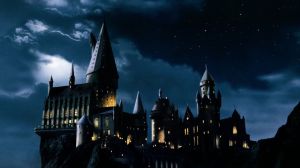Videos by ComicBook.com
is reporting that one of comics’ great crossover battles has finally come to an end: After ten years, Spawn creator Todd McFarlane and Sandman writer Neil Gaiman have settled their lawsuit. In papers filed with U.S. District Judge Barbara Crabb, the pair say that they’ve come to terms and that they would like her to approve their settlement and dismiss their pending case.”This is intended to put an end to the whole thing. It’s fair to say both parties are pleased to have this resolved,” said Jeffrey Simmons, part of Gaiman’s legal team.The whole affair began in January 2002, when Gaiman sued McFarlane for ownership of the characters of Angela, Cogliostro and Medieval Spawn, characters he created for McFarlane in early issues of Spawn, which recently passed 200 issues and has the highest running count of any title produced by Image Comics. Shortly after that lawsuit was filed, a jury found in Gaiman’s favor and awarded him joint ownership of Spawn #9 as well as Spawn #26 and an Angela miniseries, all of which used properties in which it was determined Gaiman had a creative interest.While McFarlane has never won an appeal, the process of determining exactly what is due to Gaiman is what’s drawn out the process; it’s difficult, after all, to determine exactly how much money a particular character (who is not the lead of the series) generated, and of course they likely wanted to create some kind of future royalty agreement so that the characters can be used in the future without fear of legal reprisal from Gaiman. In 2010, Dark Ages Spawn and the characters of Domina and Tiffany were added to the claim as Gaiman said (and the court agreed) that those characters were derivative of the ones he had already been credited with creating.Comic Book Resources quoted Gaiman as saying, “I think the various decisions, particularly the Posner decision, were huge in terms of what the nature of dual copyright in comics is. What is copyrightable in comics is now something that there is a definite legal precedent for. There were a lot of things that were … misty in copyright [law] that are now much clearer.”McFarlane took on Gaiman early, as his deadline trouble and burgeoning business ventures outside of the comics industry drew him away from writing and drawing Spawn entirely on his own not long after he made it a hit when Image launched in 1992. While he’s credited with writing much of the series, he hasn’t been the regular penciler since 1995’s Spawn #36. It’s been noted in the past that this lawsuit perfectly demonstrates the problems inherent to the work-for-hire system popular at Marvel, DC and other mainstream publishers, which Image was ostensibly founded to rebel against.









